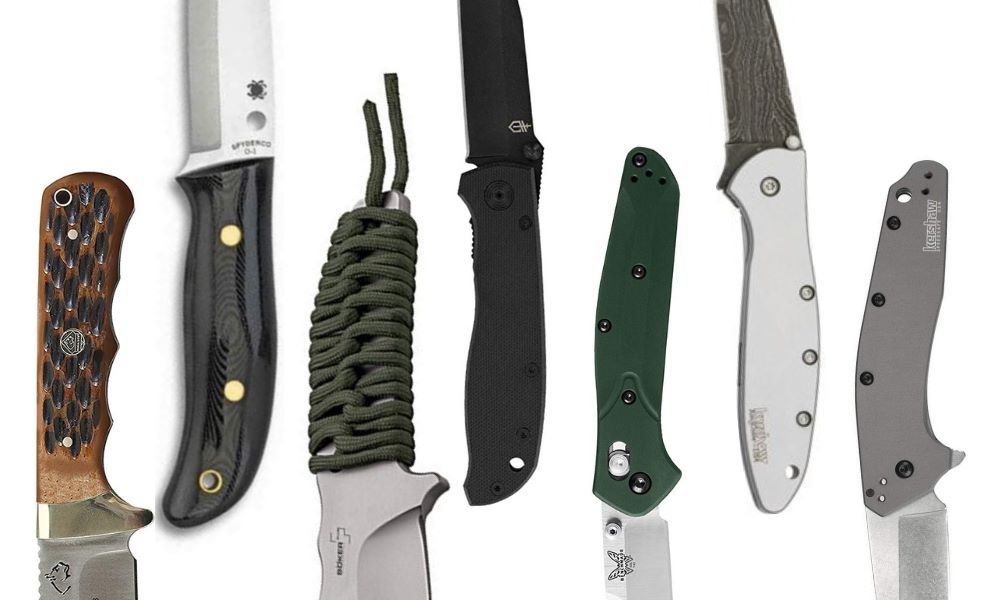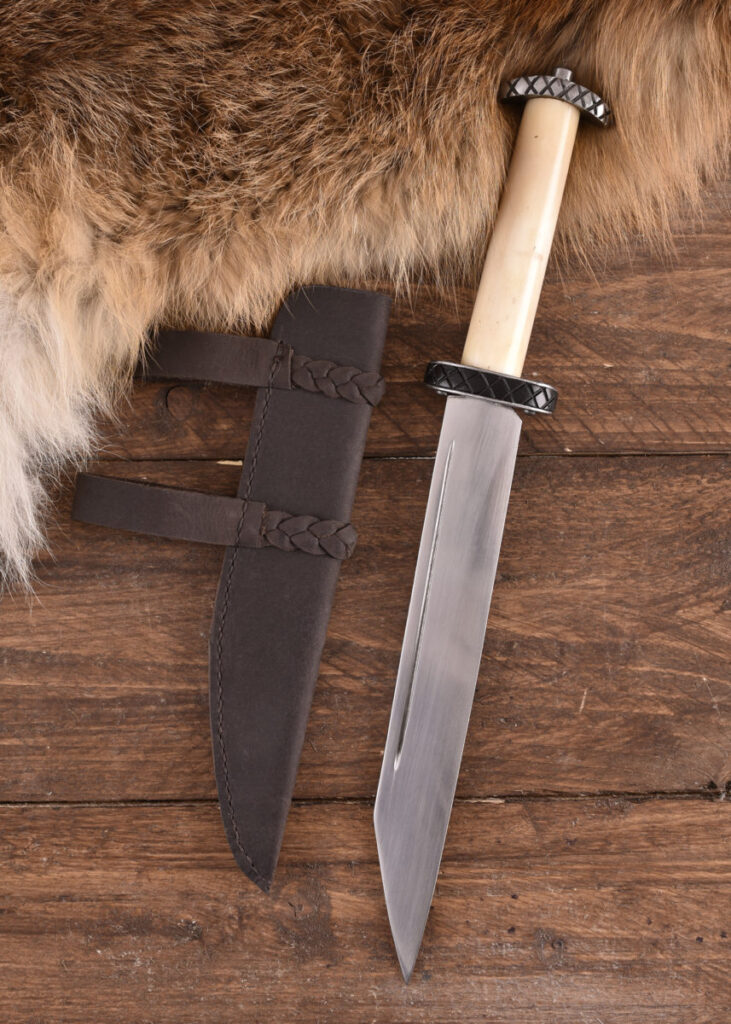Experienced knife users know that the handle can be just as important as the blade. In addition to adding a touch of style and individuality, the handle provides a grip that allows you to hold and maneuver the knife safely. Whether you’re crafting a fully customized piece or assembling a knife from a kit, there are numerous handle materials to choose from. Far from being purely aesthetic, these materials each have their own qualities, as well as advantages and disadvantages that can affect the knife’s performance during use.
Summary
ToggleExperts offer a detailed overview of several popular knife handle materials. Get to know each material and decide which best suits your needs and personal preferences. This is an excellent resource for those choosing their first knife or enthusiasts looking to try a new type of handle.
What Material to Choose for a Knife Handle ?
The availability of a wide range of materials is both a blessing and a curse, as it offers you many options.
The main categories of materials are as follows:
- Natural
- Synthetics
- Metals
Here are some homemade knife handle ideas for materials to choose for your project !
Materials for Knife Handles : Natural
These come from natural sources and include :
Wood Knife Handle :
The most common choice for knife handles. It’s an affordable and readily available material. Wood comes in many varieties to suit your needs. The handle is also comfortable and slip-resistant. However, wood is porous, and the handle may lose stability over time. There are many examples of wood knife handles: wooden pocket knife handle, wooden table knife handle, wooden kitchen knife handle, boxwood knife handle…

Viking Tiger Knife Handcrafted Collection
Leather Knife Handle :
Real leather isn’t necessarily expensive and will give your knife a traditional look. Therefore, if you’re a hunter, you might appreciate a leather knife. However, it’s not a durable material, and you may need to replace the handle often.
Bone Knife Handle :
These are classic handle options, and bone can come from various animals. This includes bison, cow, sheep, as well as elk, deer, etc. The issue is that bones can crack with heavy use, and the handle can be slippery.
Materials for Knife Handles : Synthetics
These are man-made handle materials, and here are the smartest choices :
Carbon Fiber Knife Handle :
Although it’s expensive, it’s known to be extremely durable. Additionally, carbon fiber is lightweight; it won’t weigh you down to carry. The only thing to watch out for is avoiding heavy impacts, as this material is fragile.
G-10 Knife Handle :
It comes from a fiberglass laminate called Garolite. It may not look attractive, but it’s incredibly durable and resistant. You’ll often find textured handles for better grip. This makes it versatile and suitable for both indoor and outdoor use.
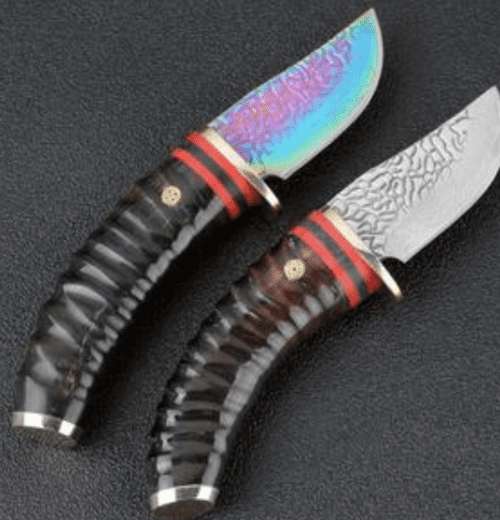
High-Quality VG10 Damascus Steel Lapland Hunting Knife for Outdoor Adventures
FRN Knife Handle :
This stands for “Fiberglass Reinforced Nylon,” and it first appeared on the American market. It’s incredibly durable and also affordable. However, FRN doesn’t have as comfortable a grip as G-10. Its affordability allows for a variety of options for different uses.
Materials for Knife Handles : Metallic
You can choose from the following knife handle materials:
Stainless Steel Knife Handle :
As a metal, it’s corrosion-resistant, making it durable. Despite this, stainless steel isn’t the hardest material, so it’s not ideal for heavy-duty knives. However, most common users will find it affordable and meeting their expectations.
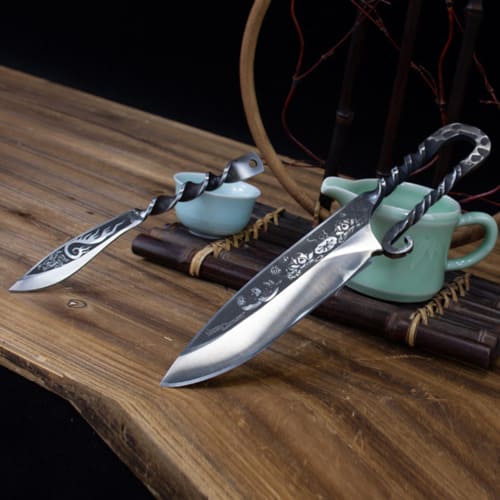
Viking Knife Set – Boning Knife and Tea Knife
Aluminum Knife Handle :
A lightweight material with impressive corrosion resistance. It’ll last a long time, but it’s essential to have an appropriate texture. You can use it indoors and outdoors, but avoid cold weather as it can be chilly to hold.
Titanium Knife Handle :
It’s an extremely strong material that offers a comfortable grip. It’s also lightweight, but it tends to scratch. The good news is that titanium is suitable for cold weather as it won’t feel cold to hold in your hands.
And now, let’s take a closer look at all knife handle materials in detail :
Natural Materials for Knife Handles :
Natural knife handles are organic and can be found in nature. Their heritage dates back to ancient human ancestors, who used knives and other tools made solely from what they could find in nature. If you want to recreate one of history’s most iconic sharp weapons or a truly unique and classic knife that echoes our survivor past, or you want to remake a knife handle, a natural handle is the solution.
Wood Knife Handle :
A wide variety of natural woods are used to create knife handles. These include maple, walnut, olive, rosewood, mesquite, desert ironwood, and pink ivory. The natural grain adds a touch of beauty and elegance to any blade, and wood can easily be carved and shaped to your liking. Wood handles are durable and generally not too expensive either. However, they can warp or be damaged by excessive exposure to moisture. Wood handles are also porous, making them prone to cracking or breaking. Proper treatment of your handles with oils such as Linspeed oil can protect your wood from damage.
If you want a handle that offers the natural look of wood but is a bit more resistant to the elements, you might consider a stabilized wood handle. This is wood that has been injected with a polymer resin and pressure-treated to make it denser and more durable.
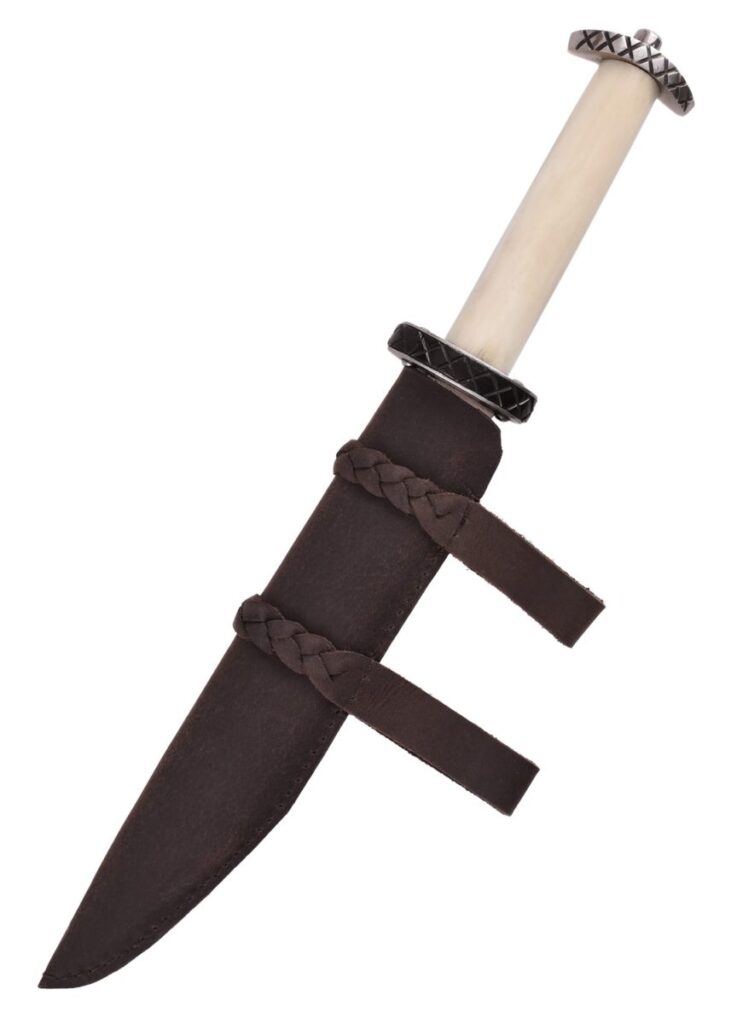
Bone and Horn Knife Handle :
Animal bones are a popular material for knife handles, as they offer a traditional yet eye-catching look. Cow bones are a common choice, and you can even use giraffe bone knife handles, which are a very popular choice as the bones are very dense and readily available while adding an exotic touch to your finished knife. It’s important to note that like wood, bone handles are porous and can crack or warp over time. Many of them are already stabilized and dyed with resins for added protection and beauty.
Similar to bone, materials such as springbok, blesbok, kudu, and merino ram horns make distinctive knife handles. Most horns are considered advanced materials to work with as they can be challenging to shape. Advanced knifemakers tend to work with the natural shape of the horn and bone to retain the materials’ natural form as part of the knife design. Other traditional horn materials include stag horn and buffalo horn, which also make distinctive knife handles for outdoor enthusiasts. Examples of these include deer antler knife handle, pocket knife handle in horn, mammoth tooth handle knife, oozing horn knife handle, hunting knife handle in horn, deer horn hunting knife, etc.
Mother-of-Pearl Knife Handle :
If you want a knife that truly stands out from the crowd, try a mother-of-pearl handle. Mother-of-pearl is produced by oysters and other mollusks. It covers the inner shell of these creatures, and over time, layers of this material can form a pearl. Mother-of-pearl handles emit an iridescent glow that makes them perfectly at home on high-end knives. Of course, it’s no surprise that they are significantly more expensive than other knife handle materials.
Those with a more limited budget may consider manufactured mother-of-pearl handles, which offer the beauty of genuine mother-of-pearl at a much lower price.

